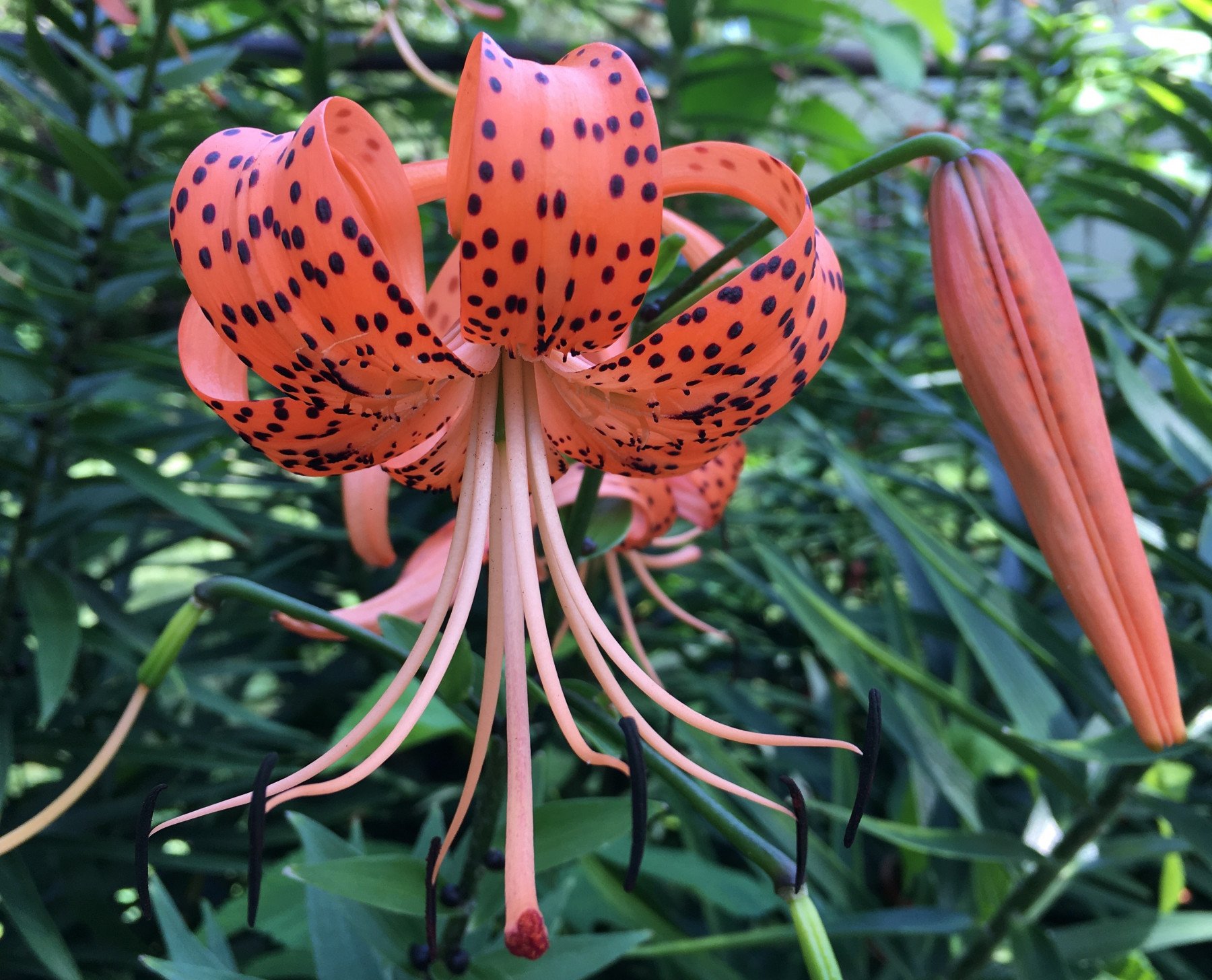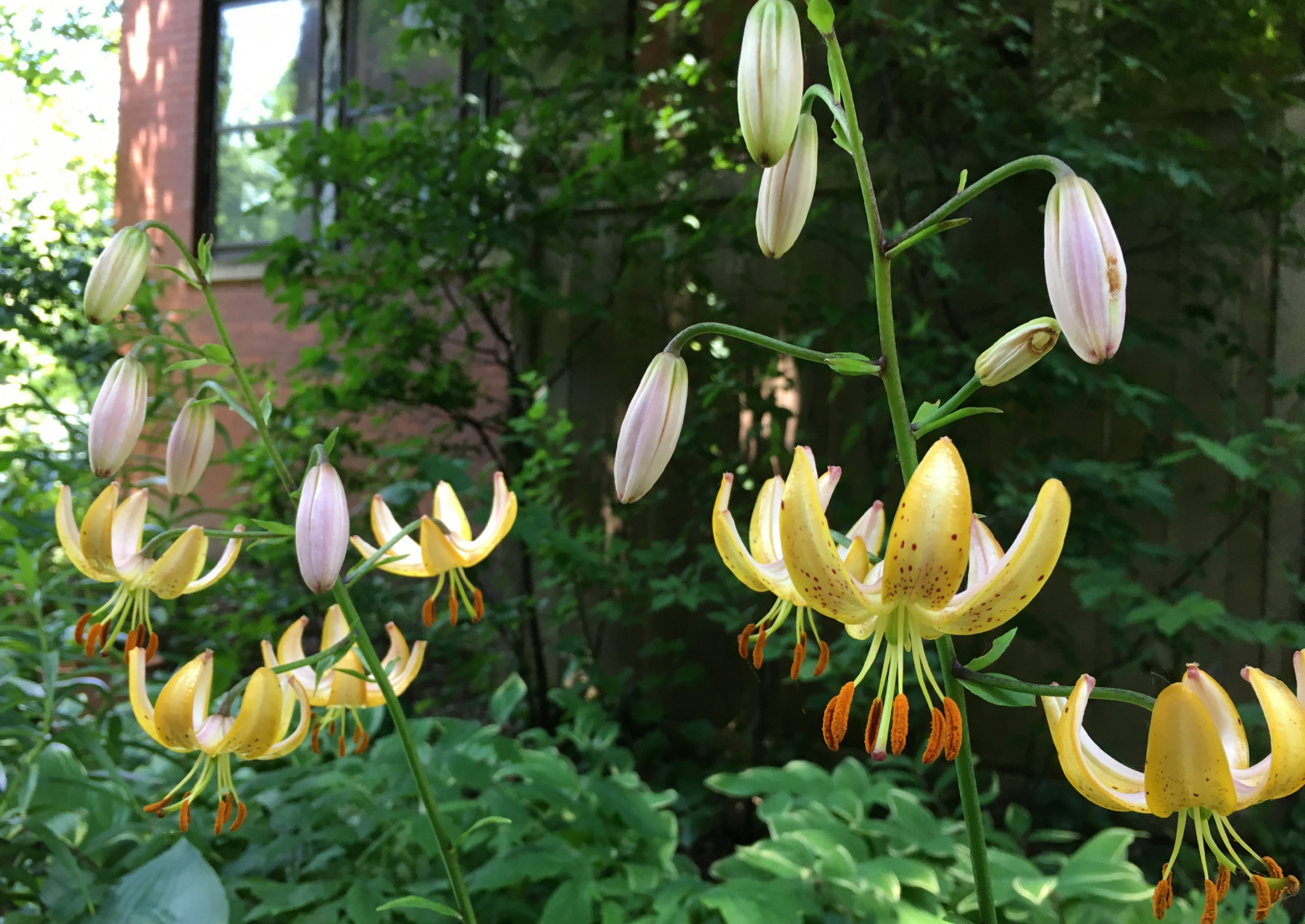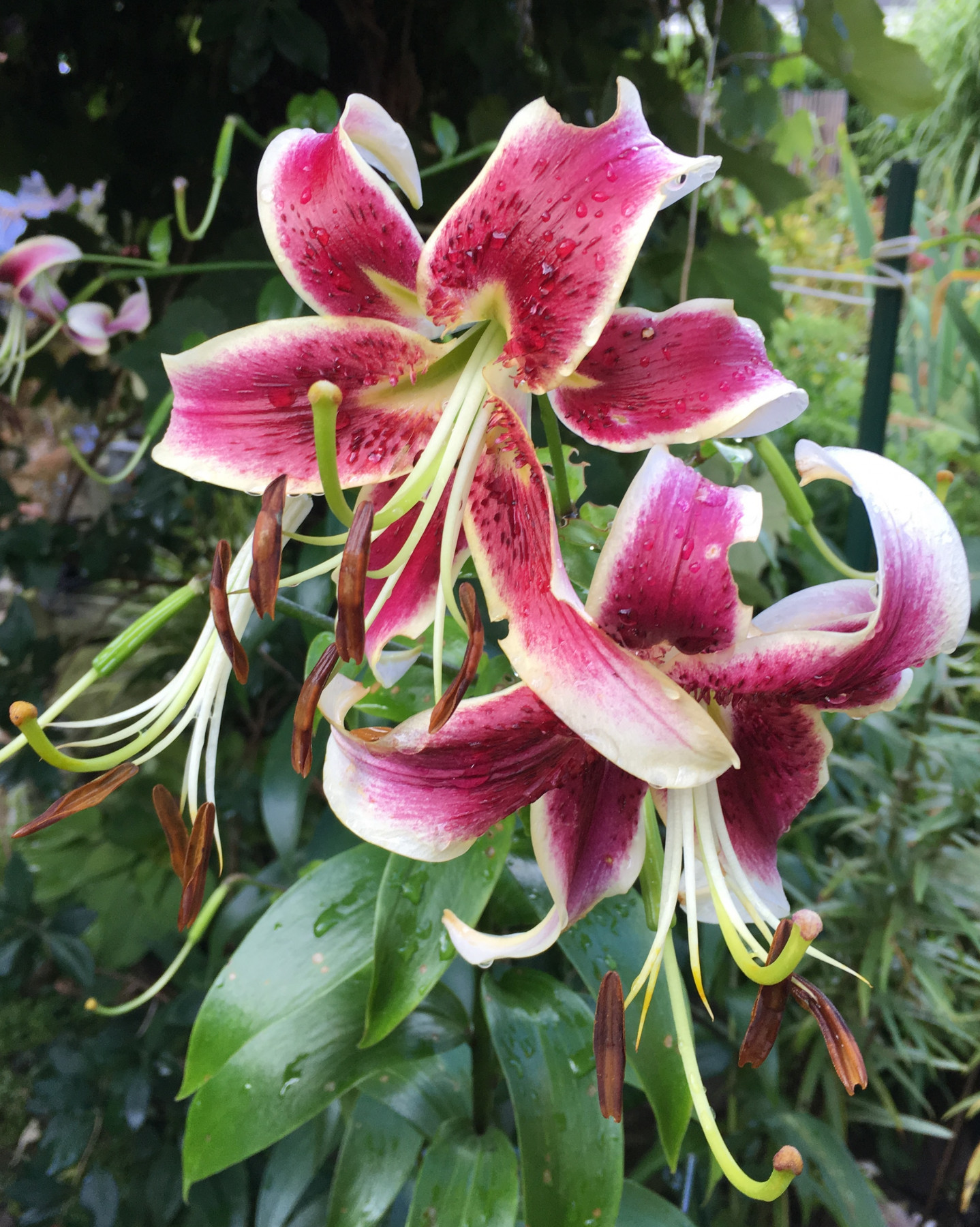
As I walk my neighborhood in summer, I wonder: Why don’t I see more lilies? They have so much to offer a garden—color, elegance, fragrance. And yet mine is the only yard on my block with visible lilies, and I’m too sun-deprived to have many.
Maybe people think that because lilies are elegant, they must be delicate. They’re not; lilies are quite winter-hardy, most down to USDA Zone 4. Or maybe they seem old-fashioned. But in a neighborhood full of restored Victorian houses, what’s wrong with that? It’s true that lilies are prime deer bait, but we’re not far enough out in the suburbs for deer to be a problem. Or possibly it’s a fear of staking.
Got me there. Many lilies do need staking. The earliest ones, the colorful Asiatic lilies that bloom in June, can stand on their own 2 or 3 foot stems. Other species, though, can grow 4 or 5 feet tall or taller, and need some help. Height is one of the prime virtues of lilies; they fill in the back of a border or punctuate a too-flat landscape magnificently. But in a windy site or one that’s even a bit shady, they need support to keep from flopping.
I used to grow the regal lily, Lilium regale, a truly splendid plant with huge trumpet-shaped blooms, pale purple on the outside and white within, and fabulously fragrant. I loved it but I had to leave it. In my quite shady site, the 7-foot-tall stems grew at about a 45-degree angle, leaning as they tried to reach toward some light. I couldn’t find bamboo stakes long enough to hold them up straight.

I still grow lilies in places where there’s a little more sun: Asiatic hybrids that bloom in June; martagon lilies (Lilium martagon), which are a tad more shade-tolerant than most; the native Canada lilies (Lilium canadense); and Michigan lilies (Lilium michiganense), a Midwestern native with small, intensely orange flowers in a Turk’s-cap shape.
There are other native North American species, but most of the lilies used in gardens are hybrids of East Asian species. The North American Lily Society classifies lilies in nine categories with names that confuse many gardeners. For example, the plants in the Asiatic lily category (relatively short, bloom in June, not much fragrance) are completely different from the Oriental lilies (taller, bloom in late summer with huge, spectacular flowers, often extremely fragrant). Here is a post from Savvy Gardening that lays out the differences pretty clearly.
Of course, by “lilies” I mean true lilies—plants in the genus Lilium—not the many other unrelated plants that have “lily” in their names, such as daylilies and plantain lilies (known to most of us as hostas). Lilies are one of those plants that are apparently so iconic they often come to mind when people are groping for a name for other plants. Only the word “rose” has been misapplied so widely.
The really important things to know about lilies are that most of them need full sun; they are not drought-tolerant so will need watering; and they need steadily moist but well-drained soil. I dig in a lot of compost before I plant lilies in my heavy clay. I give the Asiatic lilies my sunniest spots, and place the native lilies and martagon lilies in dappled light at the edge of the shade.

Most lilies are hardy enough to survive any Chicago winter, especially under a nice blanket of mulch. I sprinkle slow-release organic fertilizer around mine in spring and top-dress them with compost when I have some handy. I water them when I water the rest of the plants in the beds. Otherwise I leave them alone (apart from the staking). Over time, if they’re happy in their spot, many lilies will multiply, with the older bulbs adding new baby bulbs alongside.
Early autumn is a fine time to plant or transplant lilies. Although garden centers usually sell lily bulbs in spring, some catalog bulb companies sell them for fall planting, so you can order them in July or August along with your daffodil and tulip bulbs.
However, you can’t wait to plant lily bulbs in October with the daffodils and tulips. Lilies need to be planted much earlier—four to six weeks before your area’s average first frost date—so they can get a good start on growing roots before the ground freezes. In Chicago, they need to go in the ground in early September. Otherwise, wait until next April to plant them.
There’s one more lily question I can’t escape: If you get a potted Easter lily as a gift in spring, can you plant it outdoors? Sure. A potted lily will most likely be a hybrid of the trumpet lily (Lilium longiflorum), a summer-blooming Japanese species that florists like because it can easily be forced to bloom early. After the plant is done flowering, plant it outdoors in soil that you have enriched with compost. It won’t bloom again the same year, but in a good spot it likely will get back on schedule and begin blooming the following summer.


